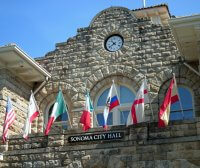In the 1970s, the notion of “affordable housing” was linked in some minds to what used to be called “Section 8” housing devoted to those on welfare or disabilities caused by drugs or alcohol. In its past attempts to help otherwise indigent people get off the streets, government initiated a variety of such programs, many of which just created pockets of high crime and suffering.
By the mid-1980s, greater understanding of the dynamics of poverty and addiction propelled government to abandon many of its previous approaches, but by then the public’s patience had grown thin. When successful legal challenges to incarcerating the mentally ill combined with the public’s frustration, welfare programs were reduced and the entire country saw an enormous increase in homelessness.
Thankfully, this rural community has been largely spared such history. Rather, the issue of affordable housing in Sonoma has been one of actually creating the housing in recognition of both an obligation to meeting its legal commitments to the state, and ensuring that the people who work in Sonoma can afford to live in Sonoma. As the real estate market has zoomed ever higher over the past decade or so, sustaining an economically multi-leveled population of residents has become more and more difficult to achieve.
At one point in time, affordable housing developments for Sonoma were envisioned as connected units clustered together. With the 1995 General Plan, this approach was abandoned in favor of “inclusionary zoning” which requires that housing developments of more than five units provide at least one unit that qualifies as “affordable’ and that larger developments designate 20 percent of their units as affordable. Under the city’s program, a unit is deemed affordable according to a precise set of criteria pertaining to household income of the buyer, and limits on appreciation on sale of the unit. The city subsidizes the purchase of the units using a variety of financing tools. The units remain affordable for 30 or more years.
his approach to affordable housing has the benefit of not segregating people based upon economic status, and instead disperses people with lower household income throughout the community. While the new units created may be smaller than the market-rate units built alongside, they are of equal quality, and more importantly, available to people who otherwise would have to commute to Sonoma to work here.
In recognition of this, virtually every city council seated during the past decade and a half has strongly supported this program. From a moral standpoint, it has been and remains the right thing to do; from a community standpoint, it has allowed Sonoma to remain, at least in part, a reflection of society as a whole. The richness and diversity of American culture transcends pure economics, and by making sure this community retains economic diversity we all benefit through neighborly contact with those whose richness does not come from monetary wealth alone.






